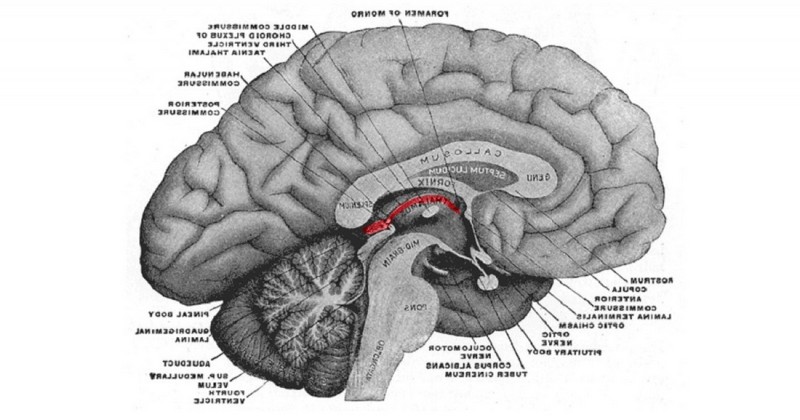Epithalamus: parts and functions of this brain structure.

This part of the brain is linked to the regulation of emotions and circadian rhythm.
The human brain is not an amorphous and homogeneous mass.Rather, it contains a large number of structures and substructures that differ greatly from one another, operate with different neurotransmitters and have different functions.
While some of these structures of the brain are known to many people, such as the amygdala or the hippocampus, others are less well known despite their important role in regulating our behavior. For example, by contributing to regulating hormones and following circadian rhythms. This is the case of the epithalamuswhich we are going to talk about in this article.
What is the epithalamus?
The epithalamus is a relatively small structure that is part of the diencephalon and can be found just above the thalamus. can be found just above the thalamus and touching the roof of the third ventricle. and touching the roof of the third ventricle. It is a structure mainly linked to the limbic system, being relevant in the management of instinct and emotions.
It is also associated to the neuroendocrine system through the pineal gland, one of the main structures that is part of the epithalamus, which is also part of this system. We are in front of a structure with a wide range of connections with the rest of regions of the brain, including the olfactory system (having also relation with the perception and reaction to odors) and many other structures of the brain.
Parts of the epithalamus
The epithalamus is made up of a set of structures of great importance for the human being. Apart from the medullary striae, nerve fibers that establish connections with other regions of the brain, we can find two large structures, which are the most relevant and well known of the epithalamus.
Epiphysis or pineal gland
The best known structure of the epithalamus is the pineal gland. It is an element known since antiquity (the first information found about it dates back to the 3rd century BC), Descartes proposing the existence in it of animal spirits related to emotions.
Innervated by the autonomic nervous system and connected to other nuclei such as the septal nuclei, the pineal gland is an important brain structure that regulates the neuroendocrine systemIt is involved in functions such as energy regulation and sexuality.
One of the most important aspects of the pineal gland is the fact that it is responsible for secreting melatonin from serotonin when there is no or very little light. Thus, the pineal gland is essential in the regulation of circadian rhythms. the regulation of circadian rhythms and of sleep and wakefulness..
It is also involved in the synthesis of endorphins and sex hormones such as luteinizing hormone, as well as in growth and sexual maturation (which its activity delays).
Habenula or habenular nuclei
In addition to the pineal gland, the other major structure of the epithalamus is the habenula or habenular nuclei (since there are actually two structures). It is attached to the previous one, and is of great importance in receiving and sending connections to the nuclei of the limbic system. sending connections to the nuclei of the limbic system and the reticular formation.. The habenular nuclei are elements that, unlike the epiphysis, do not have endocrine functions.
It acts largely as a bridge between various brain areas (including, in addition to the above, the thalamic nuclei, those of the forebrain or preoptic area), although precisely because of these connections it also seems to be involved in the motivation not to act, fear and negative evaluations of events similar to those that in the past could have caused us harm. Finally, they are also linked to the capacity of emotional information to odors..
Their functions
As we have indicated above, although the epithalamus is not particularly well known, its existence and functioning in the encephalon is of great relevance for human beings, having important functions for our adaptation and survival.
As part of the limbic system, it participates in the management of emotion and motivation.. In this sense, its role in different disorders such as depression or anticipatory anxiety can be explored.
One of these functions is the management of circadian rhythms, our Biological clock that regulates at what times of the day we have and use more or less energy. In this sense, it is also of great importance in sleep management, since the pineal gland present in the epithalamus reacts to the absence of light by producing melatonin and decreasing energy levels, facilitating sleep.
It also participates in growth and sexual maturationadjusting the biological rhythm in which we develop and become adults. Finally, its connections with the olfactory pathways are related to the ability to perceive odors and give them an emotional meaning.
Bibliographical references
- Kandel, E.R.; Schwartz, J.H. & Jessell, T.M. (2001). Principles of neuroscience. Fourth edition. McGraw-Hill Interamericana. Madrid.
(Updated at Apr 12 / 2024)